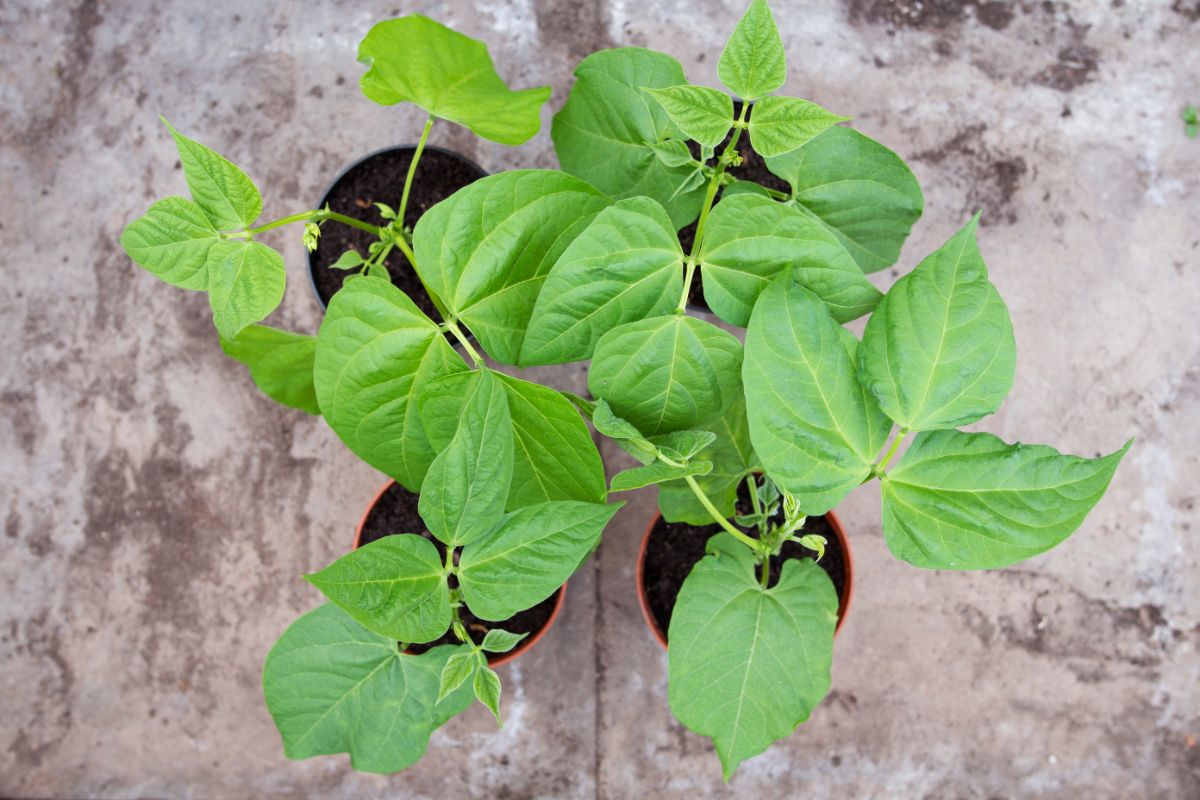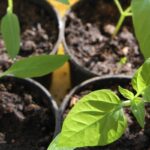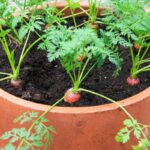Runner beans are a favourite for many gardeners, not just for their delectable taste but also for their vibrant flowers and rich foliage.
If you live in an apartment with no garden, or you have an outdoor space but no ground area for growing veg, you don’t have to miss out. You can grow your beans in pots instead.
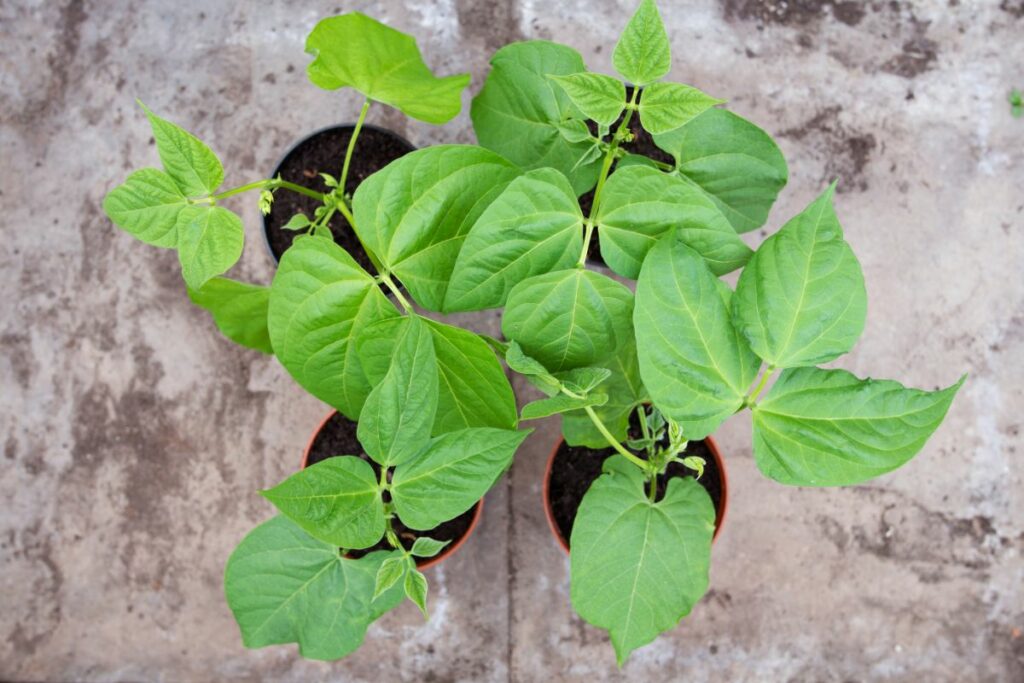
Growing them in containers can be both a space-saving technique and a delightful aesthetic addition to your patio or balcony.
But there are things to bear in mind if you want to grow runner beans in containers successfully.
Let’s dive straight in!
The Key To Growing Runner Beans In Pots
There are essentials you have to get right to grow runner beans in pots or containers.
These include choosing the right container, using the right compost, when to plant the beans, and how to support their growth.
Let’s look at each of these in more detail below:
Selecting The Right Container
A container’s depth and breadth are crucial for the thriving growth of runner beans.
With their tendency to grow deep roots, they require a container at least 45 cm deep and 30 cm wide.
Besides size, drainage is essential. Waterlogged soil can stunt growth and even kill the plant, so ensure that your chosen pot has efficient drainage holes.
If possible, opt for containers made of clay or terracotta; they’re breathable and can help regulate soil moisture.
Soil And Compost
Runner beans thrive in rich, well-draining soil.
A blend of high-quality multi-purpose compost with well-rotted manure or garden compost can offer them the nutrients they crave.
Incorporating some perlite or sand can enhance drainage.
To keep the beans nourished throughout the growing season, consider adding a slow-release granular fertiliser at planting time.
Planting The Beans
If you live in an area with a cooler spring, starting your beans indoors in April is a great idea.
Use biodegradable pots to sow seeds about 5 cm deep, as these can be planted directly into the containers, causing minimal root disturbance.
For those with milder springs, direct sowing into the containers from late May to early June is ideal. Always remember to water well after sowing.
Supporting The Plants
Runner beans, true to their name, are enthusiastic climbers. Introducing a robust support system early on will help guide their growth.
A central stake or cane can suffice for singular plants, but for a more aesthetic appeal, consider a wigwam arrangement using multiple canes tied at the top.
As your plants grow, occasionally check if they need assistance clinging to the support.
Soft garden twine can be used to tie wayward stems gently.
Watering And Feeding
While runner beans are relatively hardy, they do have a preference for consistent moisture.
During drier weeks, especially when the plants are flowering and setting pods, ensure the soil remains consistently moist.
Overwatering can lead to root rot, so it’s a balance.
Once flowering commences, a fortnightly dose of liquid fertiliser can significantly boost pod production.
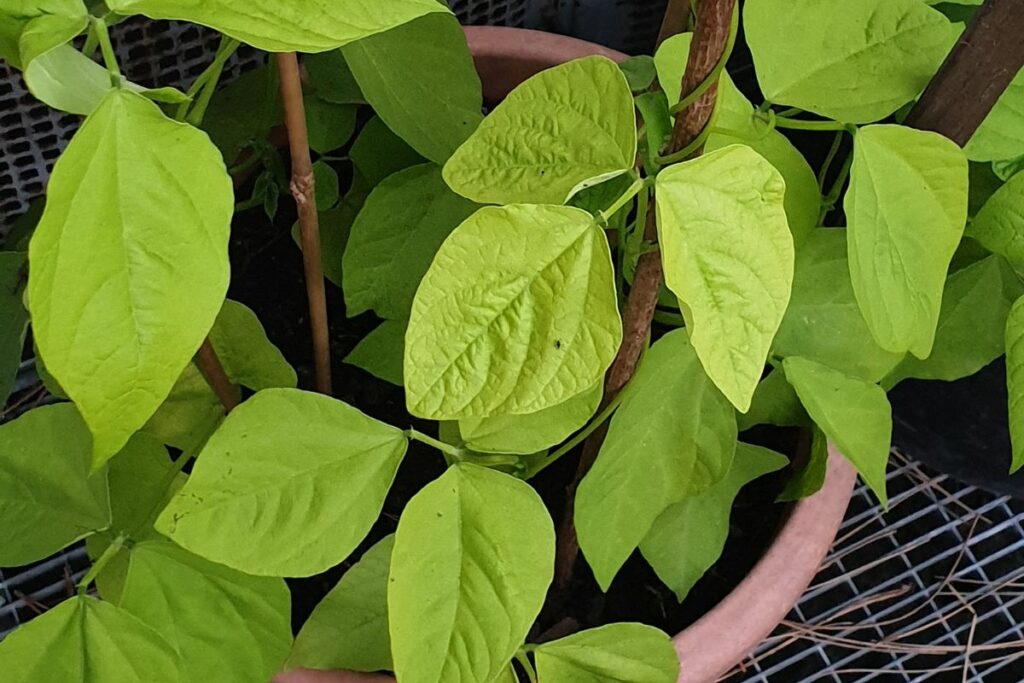
Pest And Disease Management
Vigilance is the key to a healthy crop, so look out for these common issues:
Aphids
Aphids are a common pest; while they can be removed with a strong spray of water, consider planting companion plants like marigolds that repel them naturally.
I appreciate this may only be possible if you’re planting your runners in pots on a patio rather than indoors.
Slugs And Snails
Slugs and snails are particularly fond of young bean seedlings (but if you’re growing them indoors, this won’t be an issue).
Copper tape, crushed eggshells, or organic slug pellets can deter pesky slugs and snails.
Fungal Diseases
Ensuring adequate spacing and air circulation can help reduce the risk of fungal diseases.
Regularly inspect plants and, at the first sign of disease, prune affected areas.
Harvesting
The joy of growing runner beans is in the harvest. Around 12-16 weeks post-sowing, your patience will be rewarded.
Harvest the runner beans when young and tender, approximately 15-20 cm long, for the most succulent taste.
A gentle approach using scissors or secateurs prevents damage to the plant and ensures continued production.
End Of Season Care
After your bountiful harvest, the beans may slow down their production. You can then cut back the plants.
An interesting tip is to leave the roots in the soil.
As they decompose, they’ll release nitrogen, a boon for whatever you plant next.
Before another planting season, rejuvenate the container with fresh compost and a handful of slow-release fertiliser.
Final Thoughts
Growing runner beans in containers, whether that’s indoors or on a patio, can be just as rewarding as growing them in the ground outdoors.
In this guide, I’ve listed the main things you need to consider for a good quality harvest of runner beans that are grown in containers.
- Can You Grow Bell Peppers Indoors? A Guide For New Gardeners - November 14, 2023
- Composting Basics: Can You Compost Mushrooms? - November 6, 2023
- A Gardener’s Guide To Growing Carrots In Raised Beds - November 1, 2023

